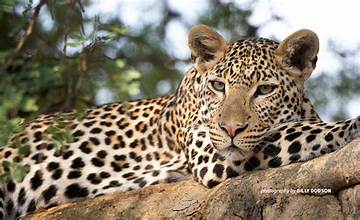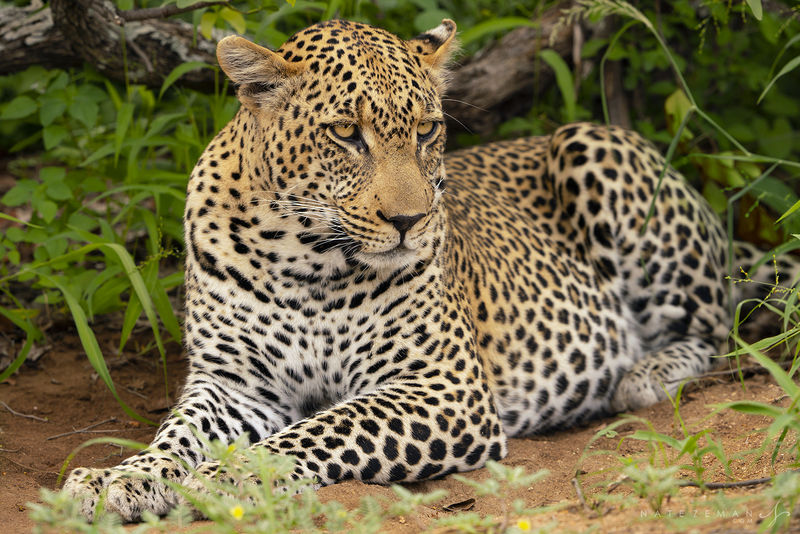Deep within the diverse landscapes of Africa resides a magnificent and elusive creature: the leopard (Panthera pardus).
Famed for its unmatched prowess as a hunter, the leopard embodies the wild essence of its surroundings. With its spotted coat blending seamlessly into the sun-dappled shadows of the savannah.
This enigmatic feline evokes both fear and admiration. Join us on a journey into the secretive world of African leopards, as we delve into their hunting habits, strategies, and the complex dynamics of survival in the untamed wilderness.
The Masterful Stalkers: Hunting Techniques of the African Leopard
African leopards are solitary hunters, utilizing their Skills in the art of subtlety and patience. Leopards are masters at securing their next meal. Unlike their more sociable lion counterparts, leopards rely solely on their cunning and abilities to thrive in their environment. Leopards hunting techniques are refined through generations, honed to perfection, and specifically designed to exploit any weaknesses in their prey.
Astonishingly agile and athletic, leopards possess a remarkable ability to climb and navigate with grace and ease. This skill is crucial to their hunting strategy. They often use trees as their vantage points to carefully survey the terrain for potential prey. From the safety of high branches, they patiently wait for the perfect moment to pounce and secure their food.
The hunting strategy of leopards showcases their mastery of ambush tactics. With their impeccable camouflage and seamless maneuvers, these elusive predators can stealthily approach unsuspecting prey without raising any alarms. At the opportune moment, they unleash their lightning-quick speed, ultimately striking their victim with deadly accuracy. This calculated ambush allows leopards to capitalize on the element of surprise, thereby enhancing their odds of a triumphant hunt.
Leopards utilize patience as a vital hunting tactic. These majestic creatures are adept at waiting for the opportune moment, sometimes even for extensive periods. Through carefully observing their prey’s movements, they can pinpoint any vulnerabilities or weaknesses to capitalize on. With this calculated method, leopards can preserve their energy while increasing their likelihood of a victorious hunt.

The diverse diet
The diverse diet of leopards is a testament to their exceptional hunting abilities. From tiny rodents to sizeable ungulates. These opportunistic hunters capture a diverse array of prey. Their impressive skills and adaptability allow them to thrive in different environments and successfully hunt a wide variety of animals.
Savannah ecosystems are home to leopards which primarily prey on medium-sized ungulates like impalas, gazelles, and wildebeests. These animals serve as a rich source of protein and nutrients, making them desirable targets for hungry leopards on the hunt.
They are also skilled scavengers and rarely hesitate to take advantage of kills made by other predators like lions and hyenas. In forested areas, leopards may rely on smaller animals like monkeys, duikers, and bush pigs for sustenance. Thanks to their agility in climbing trees, they can easily maneuver through dense canopy environments and have access to a diverse range of potential prey. Additionally, leopards in forested habitats may even incorporate fruits and vegetation into their diet.
Understanding the feeding habits of leopards is no easy feat. These majestic cats are notoriously elusive, known for their sneaky ways of hiding their prey in thick foliage or hoisting it up into trees to stay hidden from other animals. Due to their secretive nature, scientists rely on a variety of methods.
These include direct observations, camera traps, and studying their droppings. This helps to uncover the dietary choices and feeding patterns of these elusive creatures in their natural habitat.
The Circle of Life is intricately connected to the conservation of the African leopard.
Studying their hunting behaviors is not only mesmerizing from a scientific standpoint but also holds profound consequences for conservation initiatives. As apex predators, these majestic cats have a vital role in upholding the delicate equilibrium of their ecosystems. By regulating prey populations and supporting biodiversity, leopards are crucial players in the preservation of our natural world.
Unfortunately, the entire range of leopards is plagued by various dangers. These include the loss of their habitats, conflicts with humans, and illegal hunting. As human communities continue to grow, they encroach on the leopard’s natural home.
This leads to clashes between the elusive predators and human settlements and livestock. Leopards are killed in response to perceived threats to people’s safety or their livestock.
The conservation of leopards and their habitats is crucial. We must take action to protect their key habitats, reduce conflict with humans, and combat poaching and illegal wildlife trade. By doing so, we can secure the future of these majestic predators. Furthermore, promoting coexistence through community-driven conservation efforts can promote understanding and admiration for these magnificent creatures.
Leopards in various regions of Uganda
Leopards are spotted in several national parks and wildlife reserves throughout Uganda. Although less commonly sighted compared to other prominent predators like lions and elephants. Leopards inhabit specific regions with favorable surroundings and a steady supply of prey. In Uganda, these majestic felines are known to reside in the following places:
National Parks and Game Reserves
Queen Elizabeth National Park in western Uganda, is a renowned top wildlife destination in the country. With a rich blend of savannah grasslands, woodlands, and wetlands, the park provides the perfect environment for leopards to flourish. Take a thrilling game drive-especially during the dawn or dusk hours when these elusive felines come out to play. Spot the graceful leopards in their natural habitat.
Murchison Falls National Park the largest protected area in the country. It has magnificent waterfalls, rich biodiversity, and breathtaking views. Despite their elusive nature, leopards prowl through the woodlands and along the riverbanks of the park.Thrill-seekers can embark on game drives and boat safaris for a chance to catch a glimpse of these majestic animals in their natural habitat.
Nestled in the remote northeast corner of Uganda lies the magnificent Kidepo Valley National Park. With its rugged wilderness and flourishing wildlife. This park is a renowned destination for nature enthusiasts. Its diverse landscape, consisting of savannah plains, majestic mountains, and winding river valleys, offers the perfect habitat for the elusive leopard to prosper. While leopard sightings may not be as frequent as in other parks, those who venture through Kidepo Valley National Park’s untamed terrain may still be lucky enough to catch a glimpse of this majestic creature.
More places to find leopards
Located in the western region of Uganda and borders the Democratic Republic of Congo. Semuliki National Park has exceptional diversity and ancient woodlands. Although the park is home to elusive leopards, they can be challenging to spot, making them a rare sight compared to other creatures in the area. Despite this, the park boasts a thriving ecosystem that presents numerous opportunities for bird enthusiasts, primate lovers, and those seeking to discover the unspoiled wilderness.
Boasting a rich diversity of wildlife, Kibale National Park in western Uganda is more than just a sanctuary for chimpanzees and other primates. Among its inhabitants are also leopards, although spotting these elusive predators may require a bit more luck compared to other parks. Nonetheless, as visitors delve into the park’s verdant forests and sprawling grasslands, they will get an opportunity to come face-to-face with these majestic cats
Keep in mind that although leopards do inhabit these regions, they are solitary and elusive creatures- meaning sightings are unpredictable. It takes a combination of patience, determination, and luck to catch a glimpse of these majestic cats in their natural environment. For a higher probability of spotting them: enlisting the help of knowledgeable rangers and wildlife guides on guided safaris and tours can greatly enhance your experience exploring Uganda’s national parks.
Conclusion
Ultimately, African leopards possess a captivating air of enigma, making them intriguing predators. Their unique hunting strategies showcase a fine-tuned harmony of stealth, patience, and adaptability, honed over countless years of evolution. As apex predators, leopards hold immense importance in the delicate balance of their respective ecosystems, carefully regulating prey populations and preserving biodiversity.
The survival of these magnificent felines is constantly jeopardized by an array of threats, underscoring the pressing demand for conservation efforts. By prioritizing the safeguarding of African leopard hunting grounds, we can secure the opportunity for future generations to relish in the splendor and tenacity of these emblematic predators in their natural habitat.
Contact us at [email protected] to plan your trip.

